I’ve just come back from a short trip to Spain. It was a work trip but, of course, I found time to have a look at a couple of second hand book shops, which had an extensive collection of local pulp fiction.
It is one of the things I have noticed about Europe, not just the places I have visited in Spain, but also in Berlin and Copenhagen, that there does not really seem to be a market for pulp. Second hand bookshops and markets are full of it and it’s dirt cheap. The only thing stopping me from buying it up for the cover art alone is the fact that I would have to ship it back to Australia, which would cost a fortune.
And it’s not as though I don’t already have enough pulp novels and magazines, sitting in boxes back in Australia. Which leads to the subject of this post - Australian pulp fiction’s little known Spanish connection.
Among my collection is a large number of Larry Kent crime novels, increasingly hard to find in the wild nowadays. Most of these were purchased as a single lot on a random visit to a second-hand bookshop in the New South Wales coastal town of Ballina (better known as the home of the Big Prawn statue) during a beach holiday many years ago.
The Kent books were one of several faux American-style private detective pulp fiction series launched in Australia in the 1950s. This particular series was published by Cleveland Publications, founded by Jack Atkins in Sydney in 1953. New Zealand born, Atkins was an entrepreneur and horse lover. For a time, he was also the secretary of the NSW branch of the conservative Democratic Labor Party, which split from the Labor Party over its links to communist influenced trade unions in 1955. Atkins’s conservative politics are a curious bedfellow with a business which specialised in the publication of sensationalist print material.
But then again, pulp fiction was always about the money.
Cleveland put out 18 novels a month at the height of its success in the late 1950s and early 1960s: war, romance, crime fiction and westerns. The latter genre was the company’s mainstay and it continued to produce westerns until December 2018 when it ceased publishing, citing the ‘trend towards electronic sources of news and reading material away from the traditional bricks and mortar newsagents [which] has seen a sharp decrease in sales over recent years, coupled with an increase in production costs from out third party suppliers.’ The cumulative impact of all these changes made Cleveland’s business model unsustainable.
Kent originated as a half hour radio show on Sydney’s Macquarie Network in 1950, called ‘I Hate Crime’, a tag line which would appear on front cover of the paperbacks for many years. The radio show featured an American reporter, Larry Kent, who moved to Australia and set himself up as crime busting private investigator. It ran for about 150 episodes until it was picked up by Cleveland, who changed the setting to New York and based Kent there for the entire series, although he did travel to other parts of the US and, occasionally further afield.
According to the late Graeme Flanagan’s Australian Vintage Paperback Guide, the first entry in the series, Dames Are Dynamite, appeared in 1954. The last novel was published in Australian in 1983, although they were still published in Scandinavia countries until the 1990s. Flanagan states that 108 novelettes and 823 novels appeared. None of the Cleveland books I have are dated and the sheer number of entries means a complete, detailed bibliography remains elusive and is probably impossible to compile.
According to Flanagan and the University of Queensland's Austlit bibliographic database, the majority were written by Don Haring, an American who came to the Australia during the war. Austlit states he married a local woman and lived in Queensland until he returned to the US in 1959 and he died in Honolulu in 1981. Haring’s name appears on the inside front cover of a number of the Larry Kent books I own.
The other author credited with the series is Queenslander Les Dunn who died in 2003. Both Haring and Dunn were also prolific writers of westerns for Cleveland under a range of pseudonyms. According to Melissa Atkins, the granddaughter of the founder and the head of the publisher for a number of years until it closed, and who I interviewed in February 2017 as part of research for my PhD on Horwitz Publications, many of the books were also written by an individual called Anthony Veitch. Born in Glasgow in 1914, Veitch died in 1983. Austlit lists 116 westerns by Veitch for Cleveland but no Larry Kent books.
The few Larry Kent books I have read are very formulaic and somewhat pedestrian in their content, as one would expect from a series that went so long. The same, however, cannot be said about the cover art.
Flanagan states that for much of the series’ run the covers were done by Australian artists Stan Pitt and Walter Stackpool. Both where jobbing illustrators who worked for numerous local pulp publishers in the 1950s and the 1960s. Their Larry Kent covers followed a formula adopted by Australian pulp publishers for all their faux American crime novels during this period: a lone, scantily clad female, often making direct eye contact with the potential reader, and usually telegraphing a classic femme fatale vibe. These women were sometimes set against a modern urban backdrop. But Stackpool, in particular, often set his cover women against solid blocks of cover, giving them a far more naturalistic tone.
The cover style of the Larry Kent series radically changed in the late 1960s, becoming far more hard-boiled and increasingly sexual and violent, in a way that had absolutely no relation to the content of the books themselves, which remained quite tame.
This was partly in line with a broader shift in the culture in the West from the second half of the sixties onwards, of which Australia was not immune. But the Kent covers from the period also telegraphed something else, a style that was more visually sophisticated style and far more brutal. I remember seeing these in newsagents as a young boy in the 1970s and being struck by how out of sync they felt with so much other material being produced in Australia at that time, even if I wasn’t able to articulate this with greater clarity.
I now associate these covers with the kind of art that appeared on the posters for the wave of gritty, explicit crime films that came out of Europe from the late 1960s on, of which the best known are the cycle of Italian ‘Poliziotteschi’ movies. And, as it turns out, this is because they were all done by Spanish artists. Spanish cover art was also used for many of Cleveland’s Western in the late 1960s and 1970s.
According to Melissa Atkins, the Spanish syndicated art agency Nova Bossa took the initiative and, quite out of the blue, sent Cleveland some covers on spec sometime in the second half of the 1960s. ‘Dad said he opened the envelope and was gobsmacked at the high quality and distinctive style. In fact he was so impressed that those original covers were immediately put to use as covers for the Halliday Western series, which were about to go into production.’ From then on, Cleveland moved away from commissioning cover paintings from local artists in favour of buying photographic negatives from Spain.
Below is a selection of Larry Kent covers by Spanish artists.
The cover art on these books were just part of a far bigger transnational market for Spanish pulp art that existed in 1960s and 1970s. In addition to Cleveland Publications, Spanish art was repurposed on the covers of a large number of the Australian horror comics in the early 1970s. It was also used extensively in British publications and, on my recent trip to Copenhagen, I also noticed Spanish art on the covers of old Danish pulp magazines and comics. And, of course, these Spanish artists themselves were influenced by other cultural forms, particular cinema. Look closely and you’ll notice Clint Eastwood, Alain Delon and Lee Marvin pop up in the illustrations below.
Some of these illustrations can be sourced back to the artists concerned.
‘R Cortiella’, whose signature appears on “Okay, Shoot It!”, The Satin Sell-Out, and Who’s Kidding Who, was Barcelona born artist Rafael Cortiella.
The name ‘Miralles’, which appears on a Twist of Fate, was Joseph Maria Miralles, who started working in the 1950s and went on to have a lengthy illustration career.
I am pretty sure that Marked Lady and Sultan of Smut, were done by Enrich Torres, whose first name I have also seen spelt ‘Enrique’ ‘Enric’ ‘Enrique’. He is perhaps the most famous of the Spanish illustrators of this period, particularly known for his work for the US Warren Horror magazines, Creepy, Eerie, and Vampirella.
Just For the Hell of It, Deadline Down Under (one of the only Larry Kent novels I am aware of with a story set in Australia), and No Way Out are the work of a man called Salvador Fabe.
Murder One is the work of Manfred Sommer, best known for the comic series, Frank Capra and his work on the French science fiction magazine, Metal Hurlant.


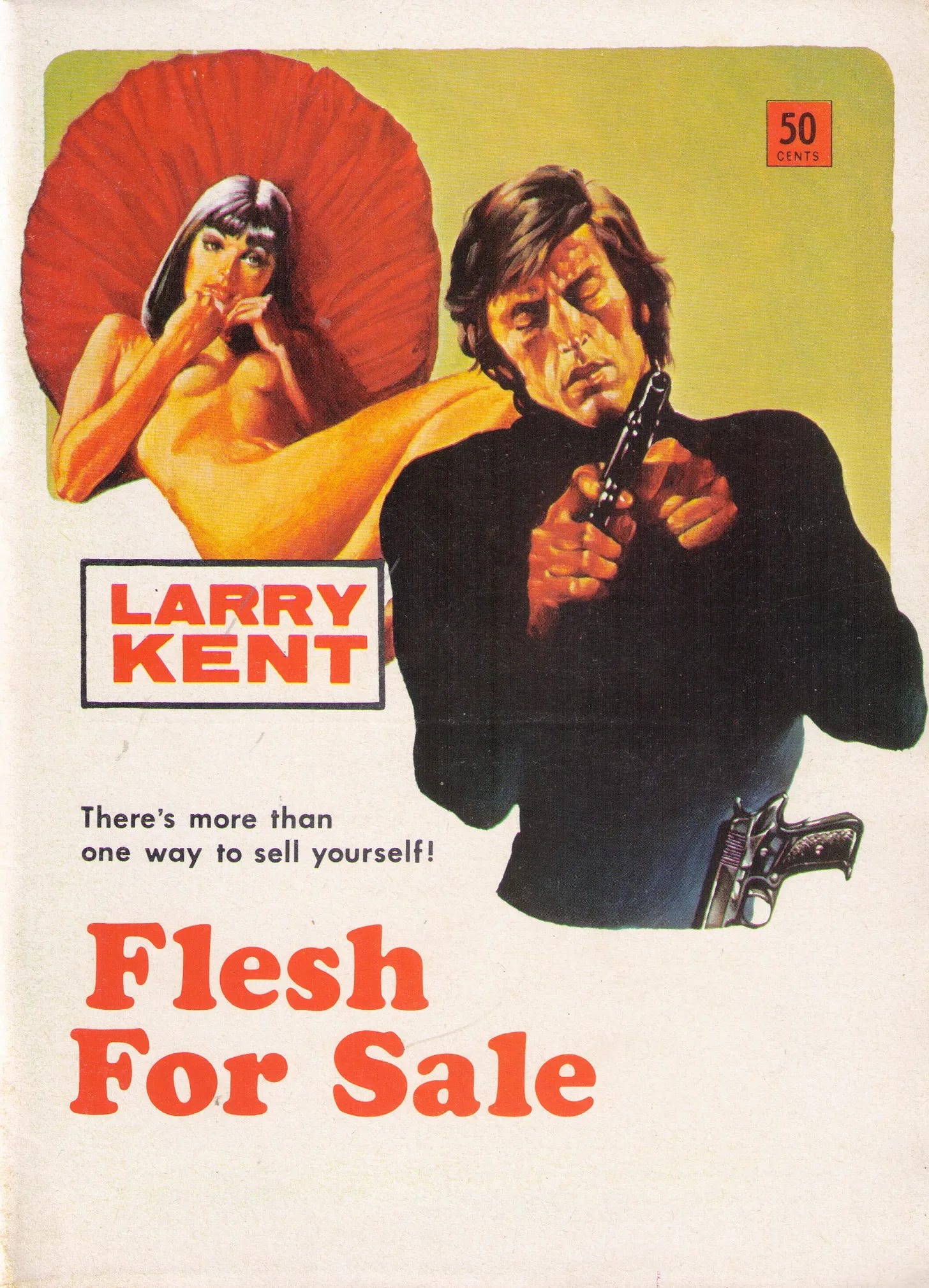


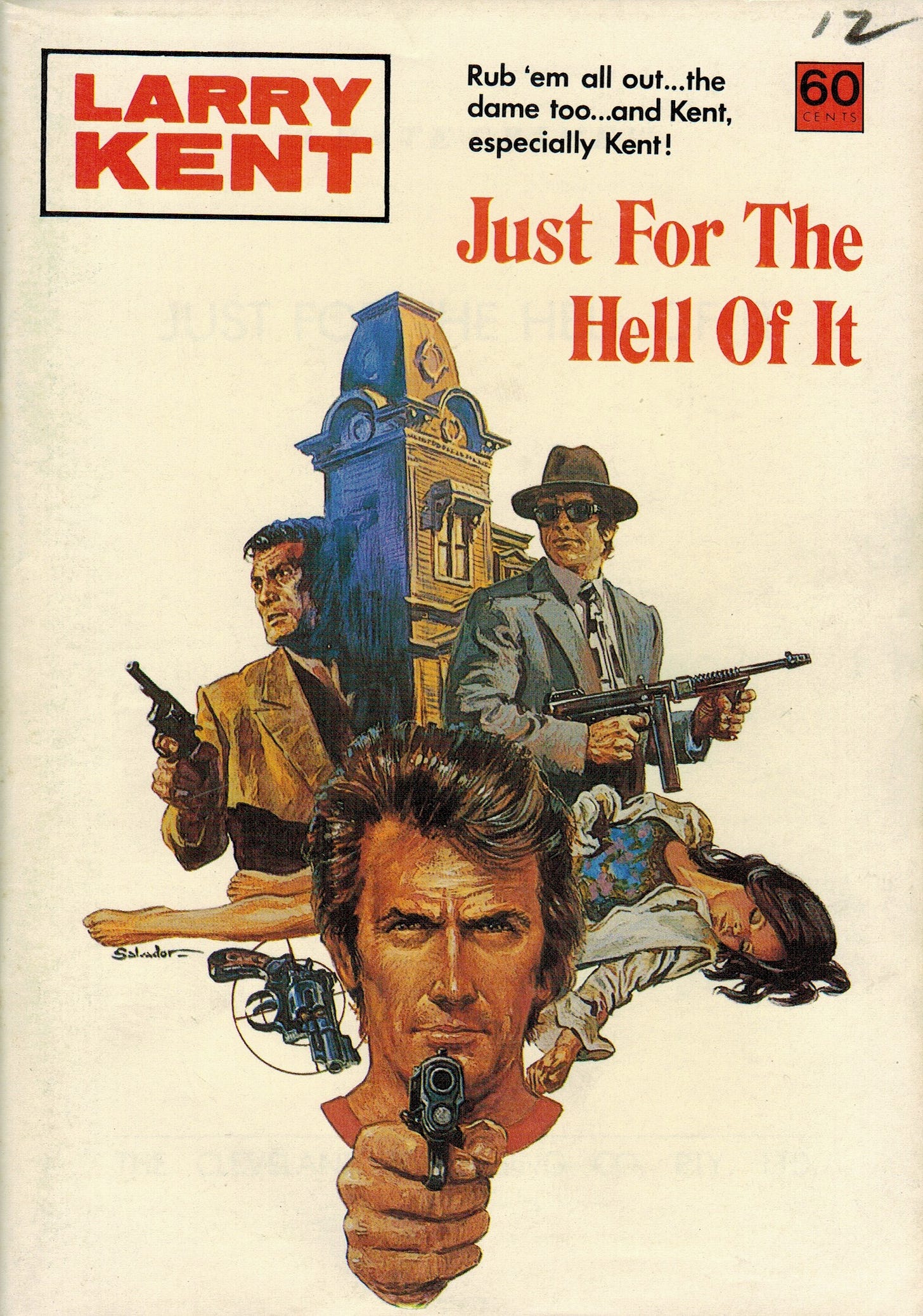
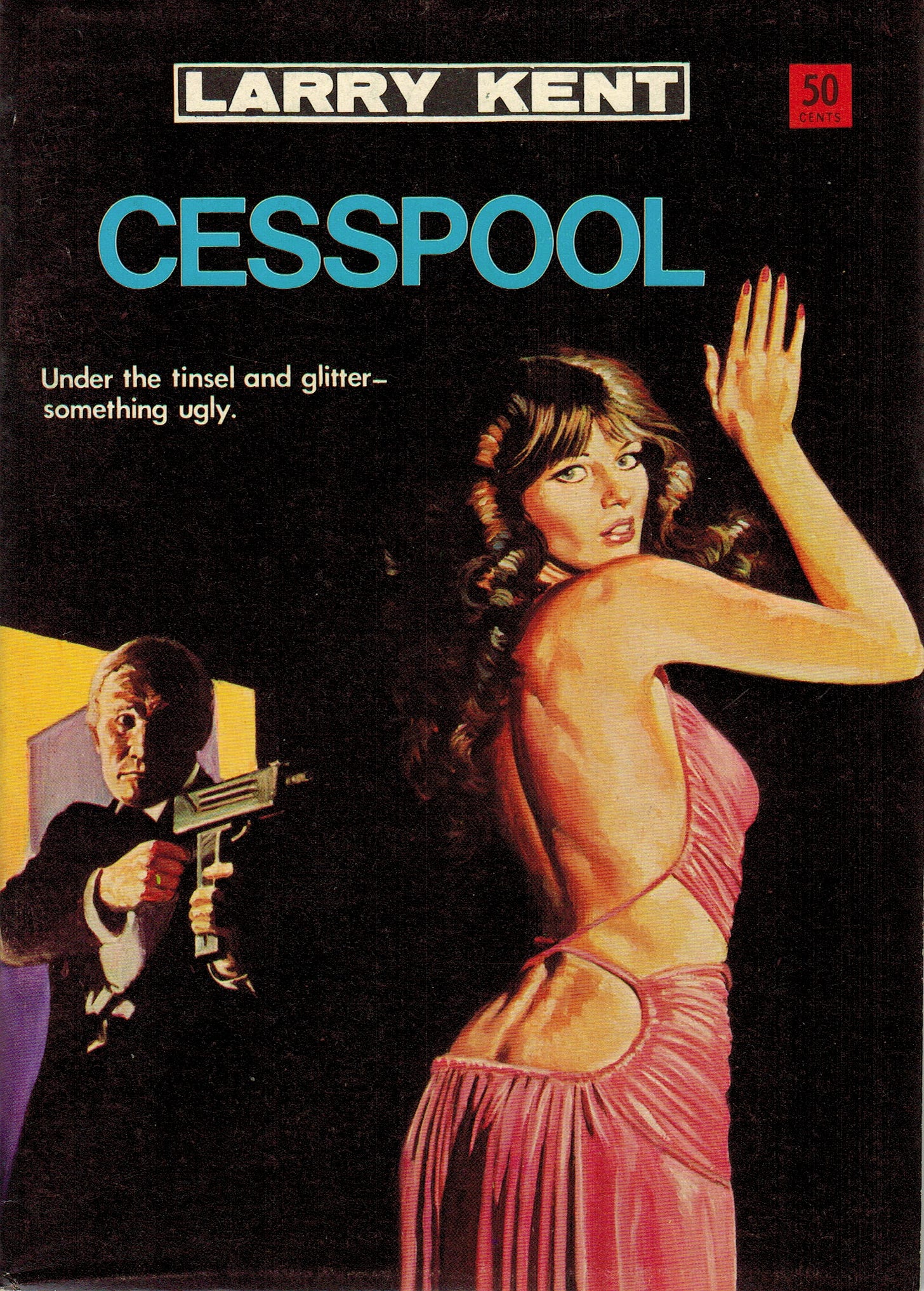


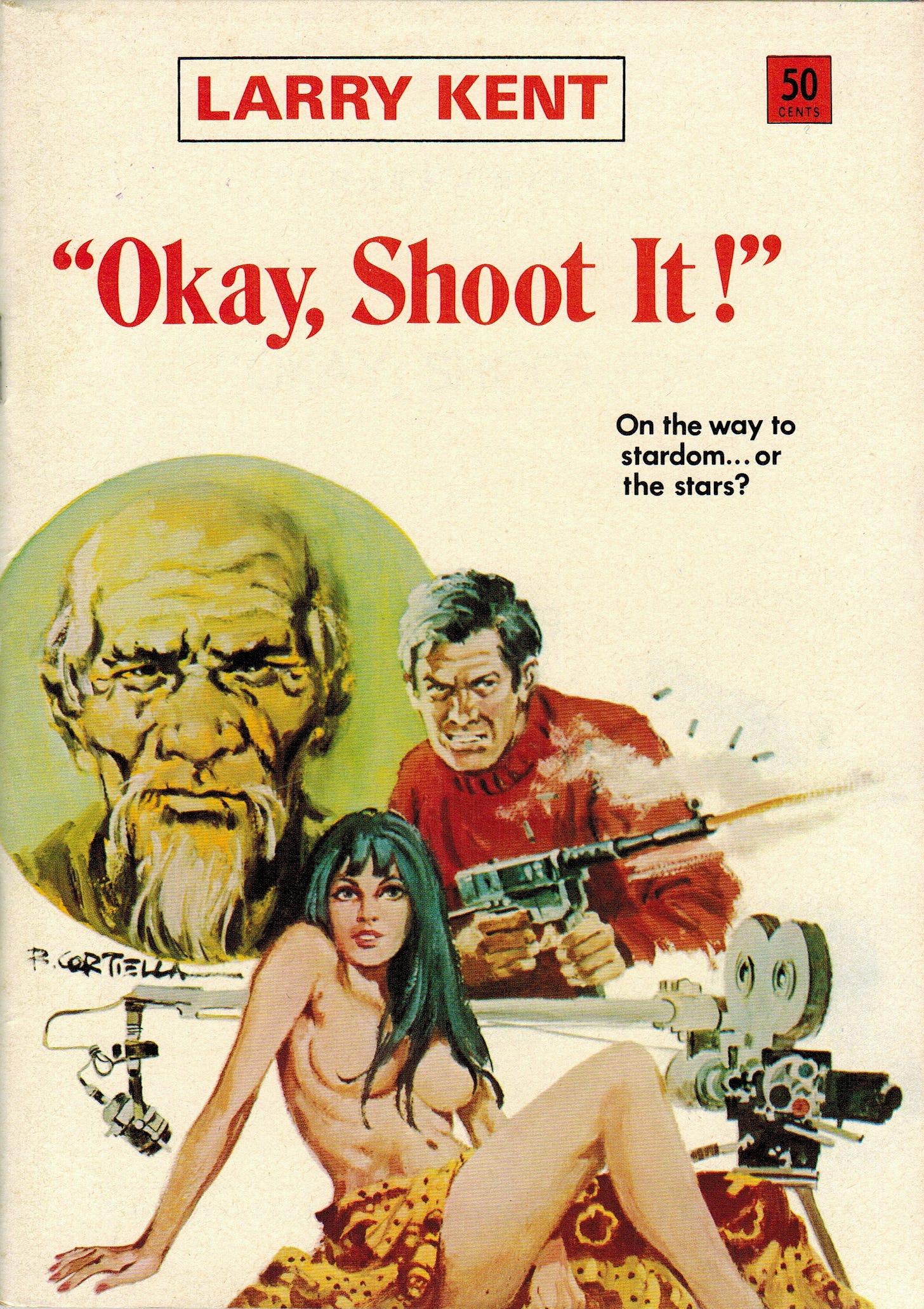

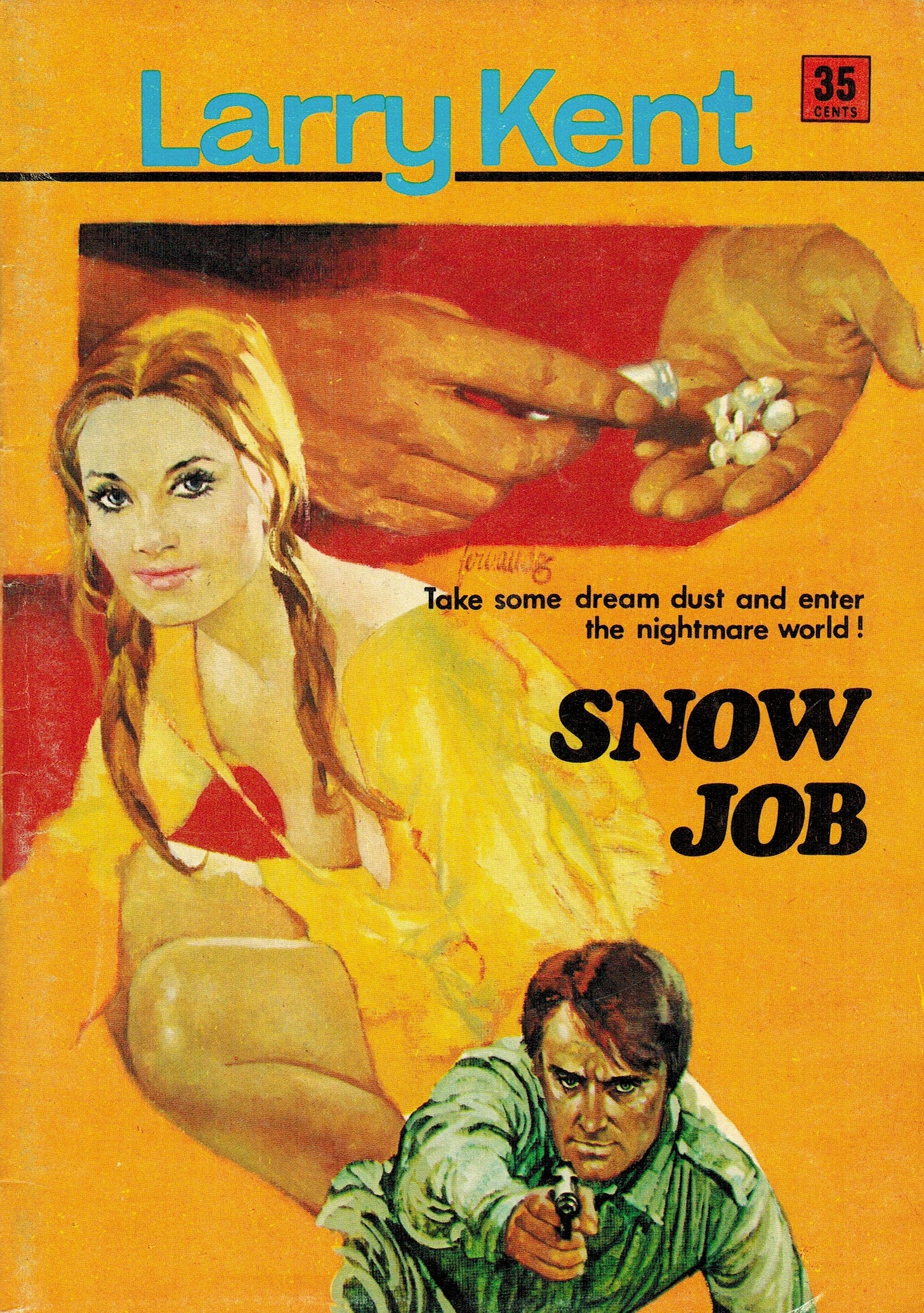

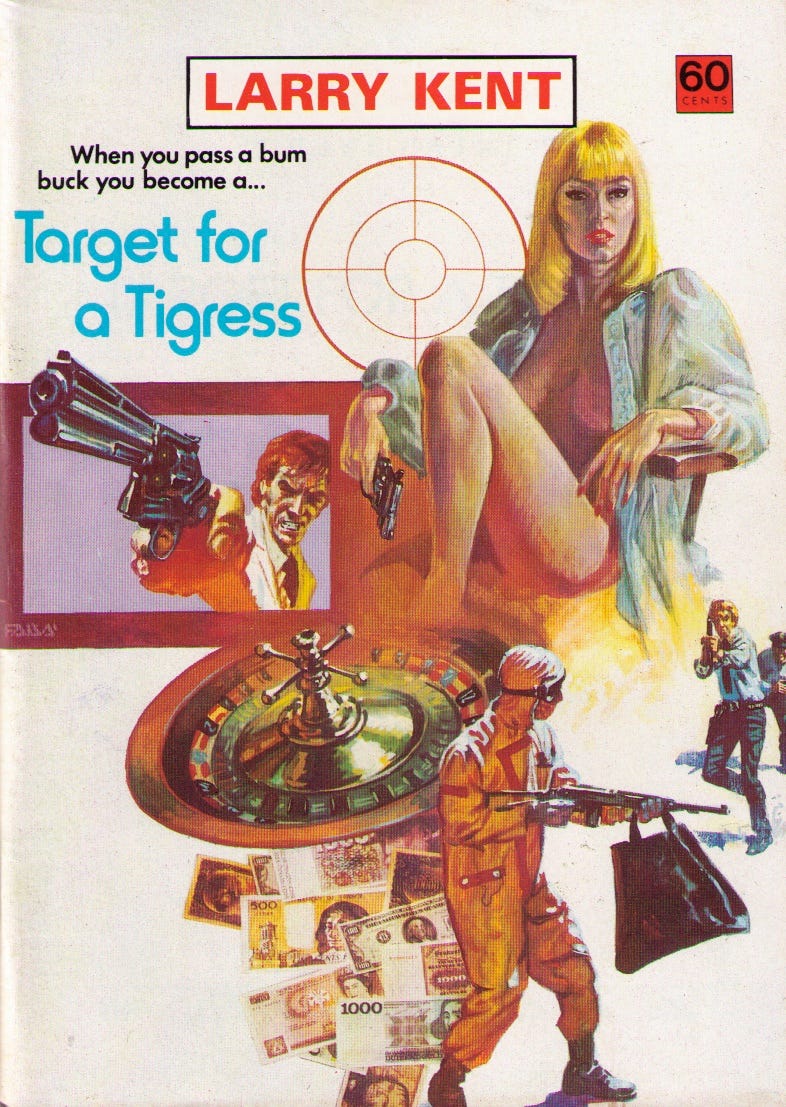

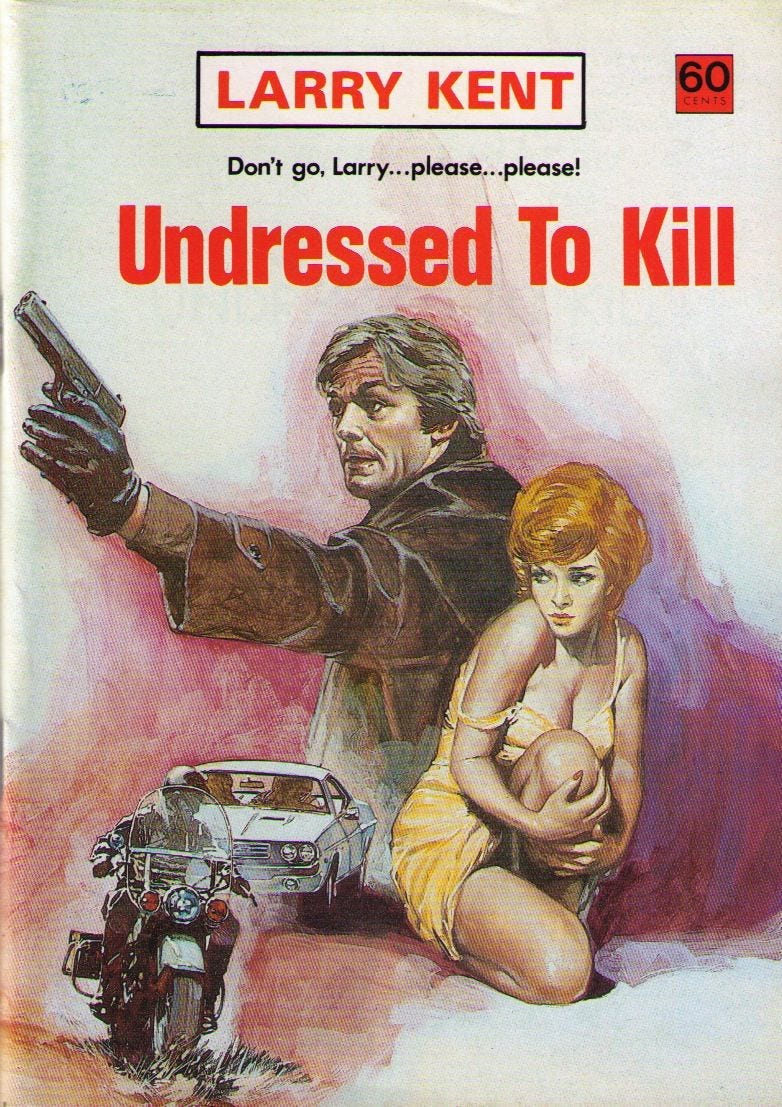



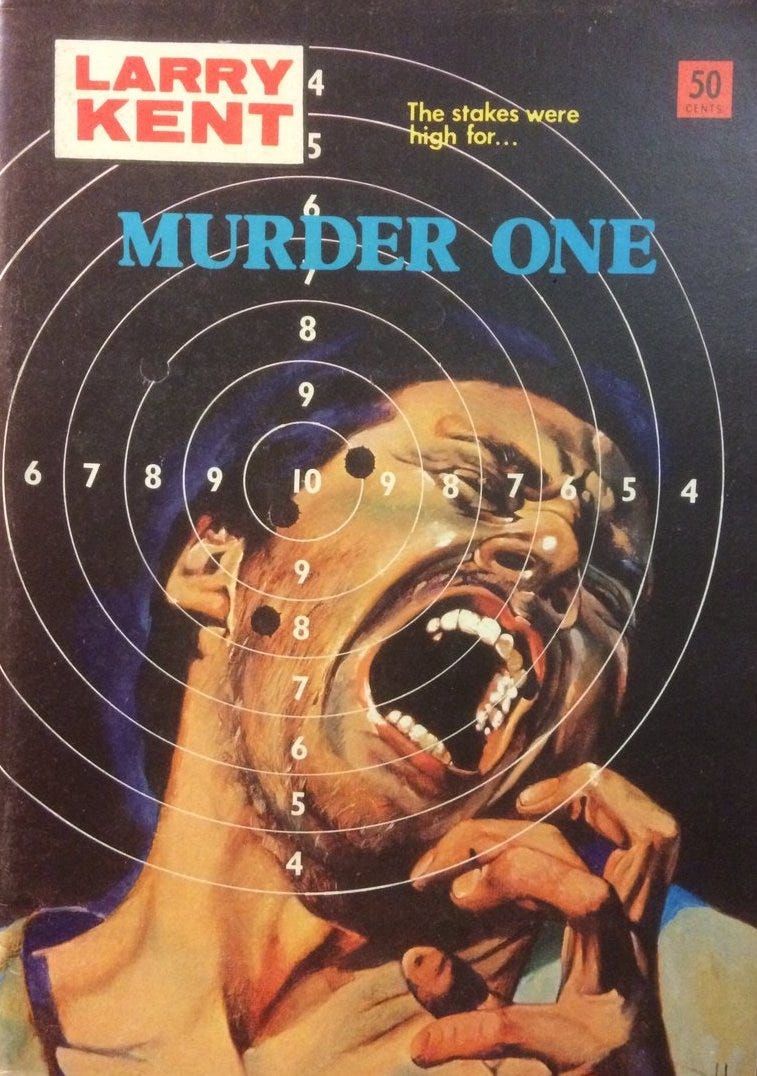
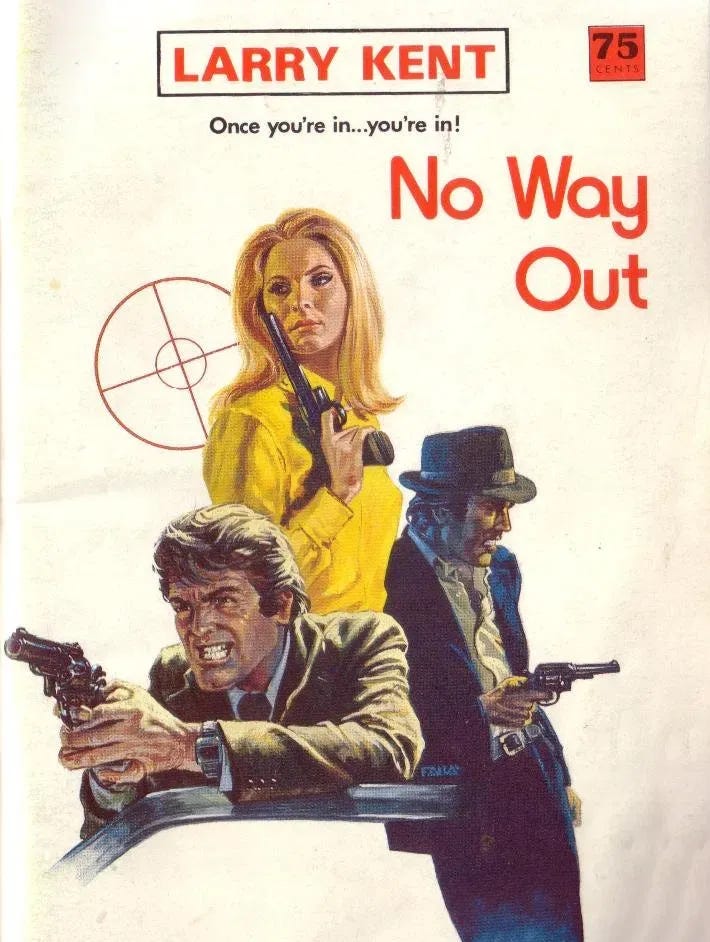
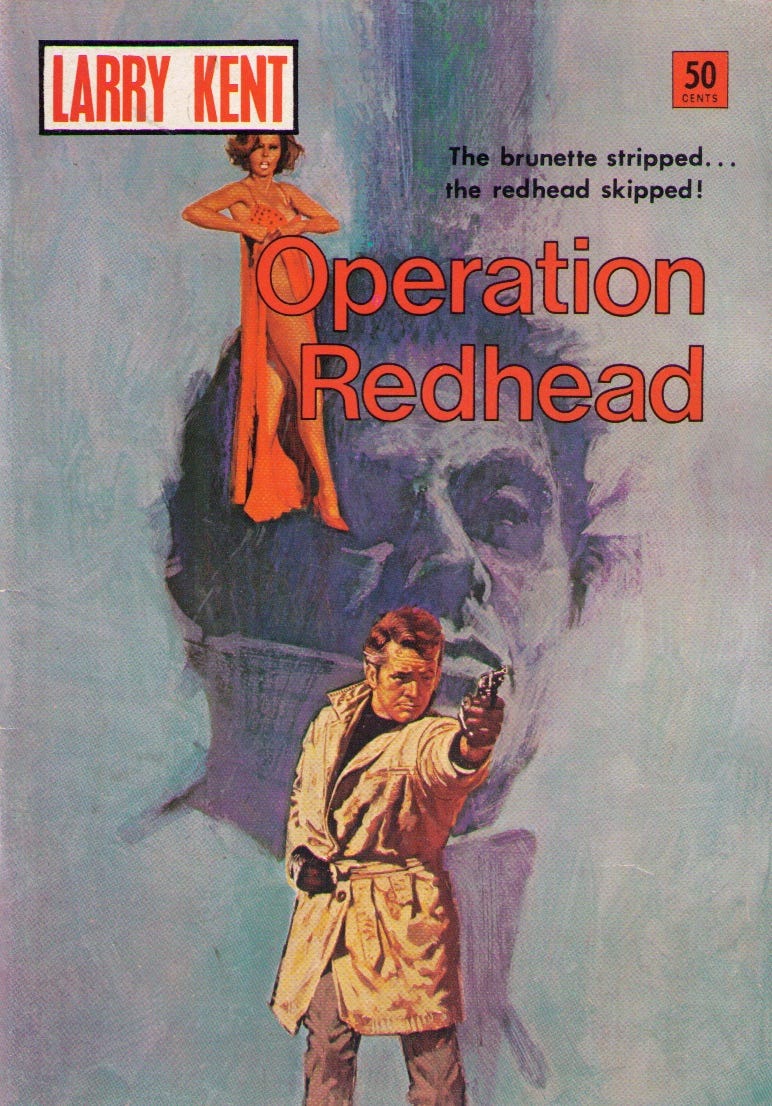
This was a fascinating read. I’ve been through Ballina years ago on the Sydney to Gold Coast run.
Pulp-tastic!